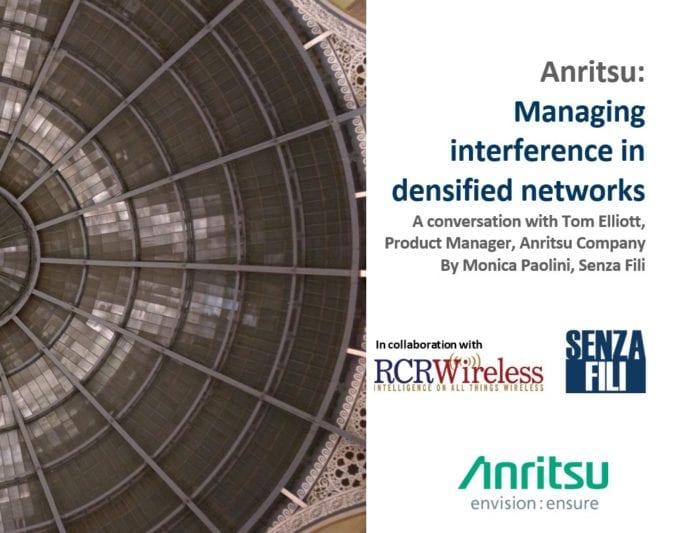A conversation about interference with Tom Elliott, Sr. Product Manager, Anritsu
The below is only a summary. Download a transcript of the complete interview and the full report “Massively densified networks. Why we need them and how we can build them.”
Interference identification and management in dense, multilayer networks is a crucial task and, in many ways, a different task than in a macro only network. In our conversation with Tom Elliott, Product Manager at Anritsu we talked about how to identify sources of interference in DAS and small-cell networks.
“When you move to a DAS system, especially a neutral-host DAS system, where you need to test three or four frequency bands on every cable, those tests multiply, and they multiply dramatically,” Tom told us. “A medium-sized DAS install could have several thousand tests. Something like a football stadium, the US Bank Stadium in Minneapolis, for instance, may have as many as 15,000 tests. It’s the sheer scale that becomes a problem. You’re talking about months, man-months, spent dealing with these tests.” In DAS testing, automation is a benefit and a necessity. According to Tom, it can cut testing times by 90%.
In small-cell deployments, Tom said “there’re going to be interference sources that will bother a small cell that a macro cell would never see. Interference becomes a bigger problem. Of course, the small-cell reception area is smaller. But there are other interference sources that will matter to the small cell that a macro tower won’t see. Efficiency in finding interference becomes very important.”
We further discussed the topic of densification during our recent webinar. Download the webinar.

